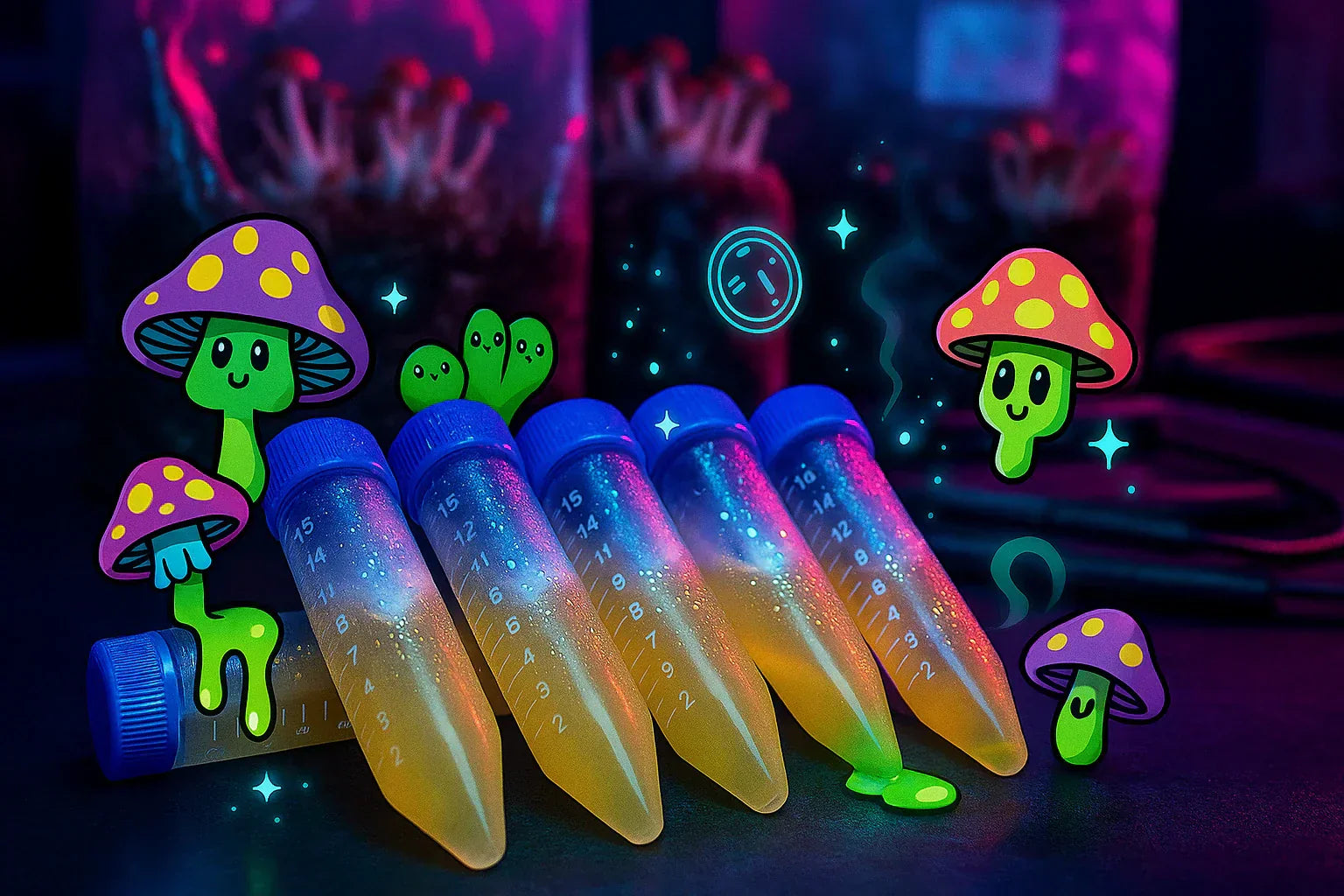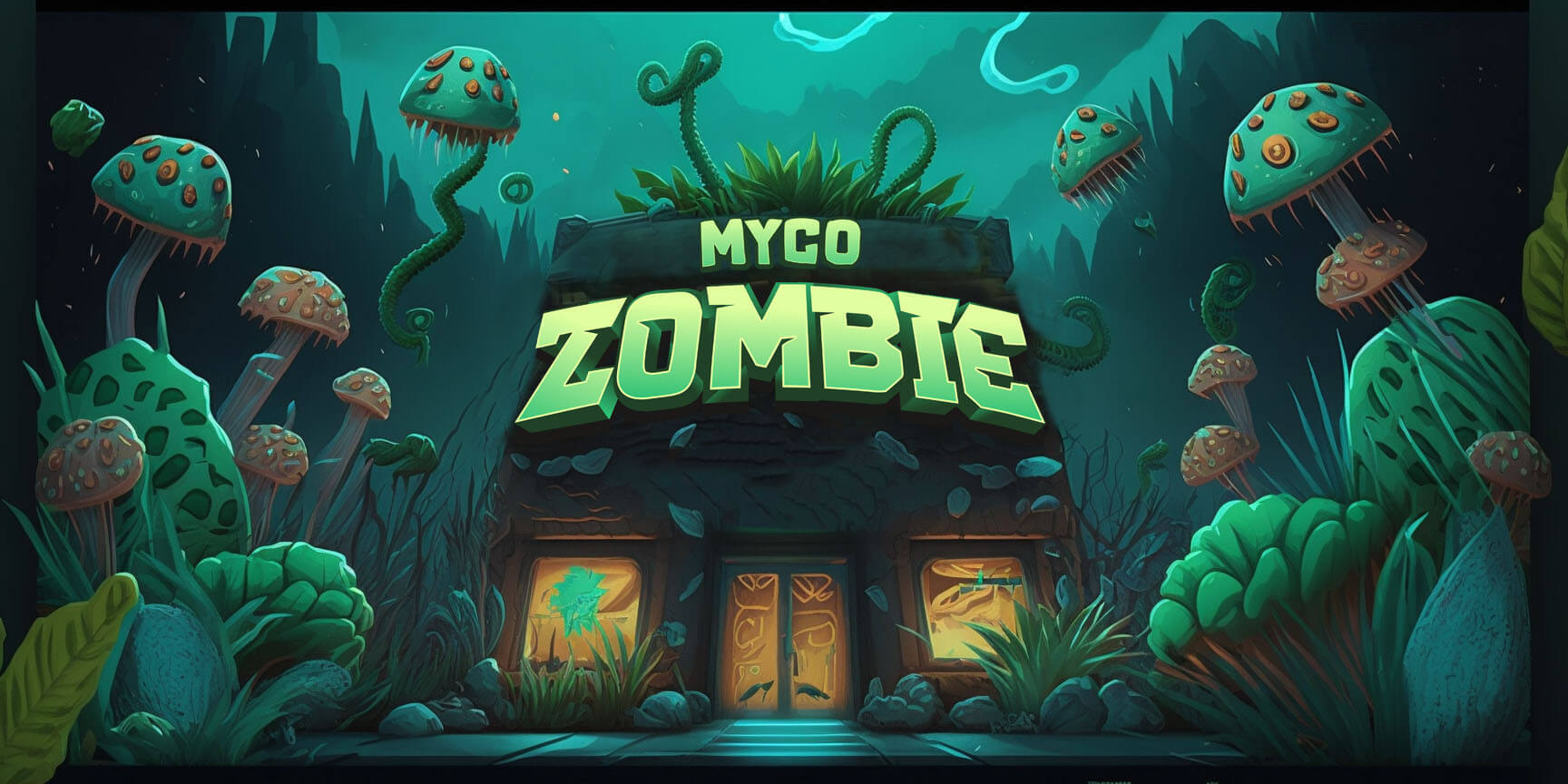⬇️ Prefer to listen instead? ⬇️
- 🧪 Liquid culture can reduce grain colonization time by up to 30% compared to agar wedges.
- 🧬 Agar slants stored at 4°C can preserve mushroom genetics for up to 12 months contamination-free.
- ⚠️ Antibiotics in agar can reduce bacterial contaminants by 75% but may mask ongoing issues if overused.
- 🍄 Agar plates offer the best visual window for identifying strong strains and detecting early contamination.
- 🧫 Storability and contamination risk differ dramatically between agar, slants, and liquid cultures, each affecting cultivation outcomes.
In mushroom cultivation, using the right tools—agar plates, slants, and liquid culture—helps you get healthier, faster, and more predictable results. Each medium does something different in the fungal life cycle. This includes isolating genetics, saving them, and quickly growing spawn. Knowing when and how to use each can make your yields much better, cut down on contamination, and keep your genetics strong from one grow to the next. When it's time to move from lab work to fruiting, our mushroom grow bags provide a clean, ready-to-use environment that pairs seamlessly with agar and liquid-culture workflows to encourage fast colonization and dependable, contaminant-free harvests.

Understanding the Differences
Each medium serves a purpose in the different stages of mushroom growing. If you pick the wrong medium for the wrong stage, you risk more problems, waste time, and can lose your genetics. Here are the main differences between agar plates, agar slants, and liquid culture.
| Medium | Best For | Shelf Life | Contamination Risk | Tools Needed |
|---|---|---|---|---|
| Agar Plates | Isolating strains, observing growth | 2–4 weeks (room temp) | Medium | Petri dishes, sterile scalpel, SAB or flow hood |
| Agar Slants | Long-term storage of pure mycelium | 6–12 months (cold) | Low | Test tubes, agar media, rack |
| Liquid Culture | Expanding inoculant to spawn substrate | 2–6 weeks (refrigerated) | High | LC jars, self-healing ports, syringes |
Let’s look at each one closely to see when and how to best use it for successful mushroom growing.

When to Use Agar Plates
Agar plates are the best way to start clean, strong mushroom cultures. They are made of a cooled gel, which is water, agar powder, and nutrients like malt extract or potato dextrose. These plates make a good place to watch, pick, and clean up mycelial growth.
Benefits of Agar Plates
- Visual Monitoring: You can easily see mycelium grow out from the center, identify sectoring (this is natural genetic change), and find contamination, like bacterial slime or fast-growing molds.
- Genetic Isolation: When using multispore spores or cloning wild mushrooms, agar lets you separate the strongest types for more growing.
- Precision Cloning: If cloning from a fruit or wild mushroom, putting a tissue sample on agar shows it is clean before you make more of it.
- Low Cost, High Control: Home growers can make their own agar media with just a few things.
Situations for Use
- Starting from spores (especially multispore syringes)
- Cloning wild fruits
- Separating strong or fast-growing strains
- Checking cultures for contamination after storage
Pro Tips
- Store prepared plates upside down to avoid condensation pooling on the mycelium.
- Use partitioned Petri dishes (e.g., with 4 sectors) to culture multiple samples per plate.

When to Use Agar Slants
Agar slants are test tubes partially filled with agar, set at an angle to give more surface space. These slants are sealed after inoculation and kept cold for a long time.
Benefits of Agar Slants
- Long-Term Cold Storage: Stored at 4°C, viable cultures can last up to 12 months or more.
- Preserves Genetics: Keeps strains from getting old or dying off from too many transfers.
- Reduced Contamination Risk: Once colonized, a sealed tube is unlikely to get infected. This is good for keeping backups.
Ideal Use Cases
- Backing up important strains
- Reducing the need to re-culture plates every few weeks
- Transporting cultures via mail with minimal space
Pro Tips
- Use high-quality screw-cap or parafilmed test tubes to minimize drying.
- Always flame the test tube’s mouth before sealing post-inoculation.
As defined by Stamets (2000), slants are an important way to store genetics for any grower who works with valuable or rare mushroom strains.
When to Use Liquid Culture
Liquid culture (LC) consists of sterile water mixed with sugar-based nutrients like Karo syrup, dextrose, or honey. Mycelium floats in this mix and grows in all directions.
Advantages of Liquid Culture
- Faster Growth: Mycelium in liquid grows in all directions, often faster than on agar, making many places to start new growth.
- Efficient Inoculation: LCs can go right into grain spawn bags or jars, which means fewer steps for transfer.
- Scalability: A single 500ml jar can start growth in over 10 grain jars easily.
Key Considerations
- High Sterility Standards Needed: Contamination grows well in sugary liquids. If any bacteria get in, they will make the culture cloudy and bad.
- Harder to Watch: Unlike agar, you can't see into LC as well. Ropey mycelium is good, but cloudy stuff at the bottom might mean bacteria are growing.
Thomas & Strong (2016) found that LC started growing up to 30% faster than agar wedges. This shows LC is very useful for medium to large home growing setups.
LC Pro Tips
- Use LC jars with self-healing injection ports and micropore filters for contamination control.
- Always test new LCs on agar before grain to avoid ruining bulk substrates.

How to Make Culture Media at Home
DIY cultivation is both rewarding and saves money. Here are easy recipes for beginners for each medium:
Agar Plates and Slants (Per 500ml)
- 10g agar powder
- 10g powdered malt extract or potato dextrose
- 500ml distilled or tap water
Steps:
- Put the ingredients together and boil them.
- Pour into Petri dishes for plates, or into test tubes slanted at 30° for slants.
- Pressure cook for 30–45 minutes at 15 PSI.
Tips:
- Add food coloring for easy labeling.
- Store poured plates in zip-top bags in the refrigerator.
Liquid Culture (Per 1L Water)
- 40ml light corn syrup (Karo) or raw honey
- Optional: 1g yeast extract to boost nutrition
Steps:
- Mix the syrup and water. Stir them well.
- Pour into LC jars that have a port and filter.
- Pressure cook for 15–30 minutes at 15 PSI.
- Add the culture when conditions are sterile.
Avoid using unfiltered tap water or untested organic sugars, as they can cause different results or bring in contamination into the LC.

Sterile Technique 101: Avoiding Contamination
Sterility is key in growing mushrooms. Without it, all methods—liquid, agar, or slant—will not work.
Must-Have Equipment
- Still Air Box (SAB): A closed plastic container with armholes to work inside still air.
- Laminar Flow Hood: This is a more advanced tool that sends HEPA-filtered air over your work area.
- Flame Source: Butane torches or alcohol lamps for sterilizing tools.
- Isopropyl Alcohol (70%): This is the best cleaner for wiping gloves, jars, and surfaces.
Best Practices
- Work slowly and carefully.
- Flame tools between every transfer.
- Clean glove surfaces and your work area very well before you start.
- Avoid talking while working, or wear a mask.

Transfer Techniques
Each transfer step can bring contamination. Learn these ways to move cultures:
Agar Plate to Slant
- Flame sterilize scalpel.
- Slice healthy mycelium sector.
- Insert without touching tube rim.
- Flame test tube rim, cap, label, and refrigerate.
Agar Plate to LC
- Remove healthy wedge from plate.
- Open LC jar in SAB or flow hood.
- Drop mycelium in; close and label.
- Incubate at 70–75°F and examine daily.
LC to Grain Spawn
- Shake LC to distribute mycelium.
- Flame syringe needle.
- Inject 2–5ml into grain bag/jar port.
- Reseal and shake after 3–5 days to disperse growth.

Inoculating Liquid Culture Syringes
To start your LC culture:
- Prepare a sterile LC jar.
- Sterilize the syringe tip using fire, allow to cool.
- Draw 1–2ml of clean culture (spore or agar piece).
- Inject through port or open lid in SAB.
- Seal and incubate.
Signs of Healthy LC
- Clear broth with ropey, spider-web mycelium
- No oily sheen, thick stuff at the bottom, or cloudy look
If unsure, test on agar before using on bulk substrates.

Strain Storage and Longevity Tips
Senescence, which is when a strain slowly loses its strength, is real. Hobbyists often miss this. To keep genetics healthy for a long time:
- Always keep agar slants of your favorite strains.
- Date and label all cultures.
- Make copies of backup cultures and make new ones every 6–12 months.
- Avoid using old agar repeatedly for transfers.
Cultures that have senesced may look fine, but can result in poor fruiting or long times to colonize.
What About Antibiotics and Additives?
Additives can boost or protect your cultures, if used with care.
Common Additives:
-
Gentamicin: Cuts down on bacteria spreading in agar cultures.
- Smith & Wu (2019) found a 75% drop in contamination growth with very few bad effects on the mycelium.
- Activated Charcoal: Soaks up toxins that can sometimes be in wild agar ingredients.
- Yeast Extract: Adds small amounts of minerals, B vitamins, and nitrogen to quickly start growth.
Caution
- Don’t overuse antibiotics. They are useful during first isolation phases, but too much use can hide problems and harm genetics.
- Always note when and where additives are used in culture logs.

Zombie Mushrooms Liquid Culture Kit Highlight
Whether you're new or need a setup you can count on, the Zombie Mushrooms Liquid Culture Kit makes the hard parts easy. It is made for clean results you can get again and again. It includes:
- Self-healing port LC jars
- Pre-sterilized water and nutrient mix
- Sterile syringes, alcohol swabs
- Easy instructions, great for beginners
Pair this with our Agar Plate Starter Kit to handle all steps: cloning, storing, and making more.

Common Mistakes and Lab Tips from Mycologists
Learning from experience saves time—and mushrooms. Watch for these errors:
- ✅ Wait for mature LC: Ropey growth needs time. Do not rush to grain too soon.
- ❌ Clear ≠ Contaminated: Some clean LCs are almost invisible early on.
- ❌ Cloudy = Trouble: This is especially true when gray or yellow film forms. Test on agar if you are not sure.
- 🧬 Track every isolate: Label and date plates early. You will be glad you did when you compare strains.
- 🧼 Re-sterilize constantly: It is better to clean too much than lose a culture to bacteria.
Final Thoughts: Choosing the Right Tool for Your Grow Goals
Each stage of mushroom cultivation benefits from the right tool. Use agar plates to isolate strong strains, slants to preserve them, and liquid culture to multiply them. Knowing how to move from one to the next links hobby grows to steady, good harvests.
Experiment as you go, write down everything, and get the setup that fits your size of growing. For beginners, combining agar and LC kits offers both control and speed.
Citations
Stamets, P. (2000). Growing gourmet and medicinal mushrooms. Ten Speed Press.
Thomas, M., & Strong, P. (2016). Mycelial propagation techniques in mushroom production. Journal of Applied Mycology, 24(3), 212–219.
Smith, J. A., & Wu, H. (2019). Contamination control in home cultivation: Best practices for amateur mycologists. International Journal of Fungi Studies, 13(2), 99–107.
Lee, H., & Turner, D. A. (2020). On-farm mushroom culture propagation: A comparison of inoculation methods. Agricultural Innovation Quarterly, 8(2), 45–53.




